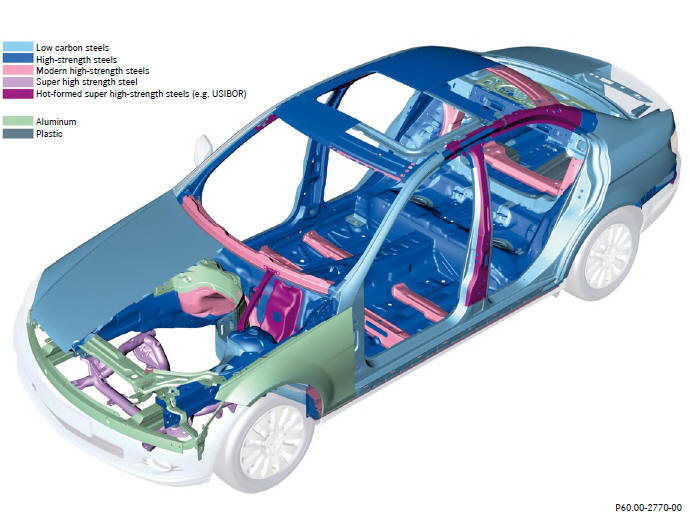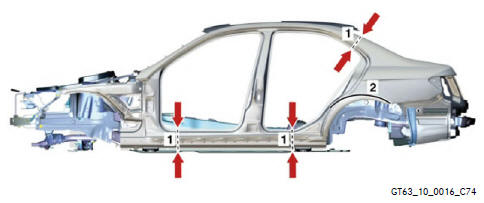Mercedes Benz C-Class (W204) 2007 - 2014 Training Manual: Bodyshell Structure
Passenger cell The highly stable passenger cell, designed as a safety cage, forms the core of the body safety concept. Contributing, above all, to its high stability under accidental stresses (head-on, side and rear collisions, as well as rollovers) are:
Marking of sectional repairs "Y" markings are included on the C-pillar paneling and on the outer side of the longitudinal member (below the paneling), which mark the recommended separation points. Joining up the "Y" markings produces an outline for the cut and join. Bonding of the rear fender to the wheel well with soft adhesive is a new feature. An appropriate repair method is described for this in WIS. In the case of a repair, the roof paneling is riveted on the left and right in the roof duct instead of being spot welded as in series production. Note For reasons of crash safety and durability, the use of two-component repair structural adhesive is absolutely essential. As a general rule, ultra high-strength hot-formed steel must never be MAG-welded.
Legend
Note Permissible repair methods are described in the Workshop Information System (WIS). In general, all areas that are bonded as standard must also be bonded during repairs. |
See More:
Mercedes-Benz C-Class (W205) 2015 - 2021 Owners Manual > Battery (vehicle): Notes on the 12 V battery
WARNING Risk of an accident due to work carried out incorrectly on the battery Work carried out incorrectly on the battery can, for example, lead to a short circuit. This can lead to function restrictions in safety-relevant systems, for example the lighting system, ABS (anti-lock braking system) or ...
Mercedes-Benz C-Class (W205) 2015 - 2021 Owners Manual
- At a glance
- Digital Operator's Manual
- General notes
- Occupant safety
- Opening and closing
- Seats and stowing
- Light and visibility
- Climate control
- Driving and parking
- Instrument Display and on-board computer
- Voice Control System
- Multimedia system
- Maintenance and care
- Breakdown assistance
- Wheels and tires
- Technical data
- Display messages and warning/indicator lamps




